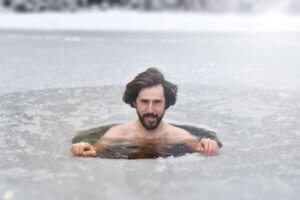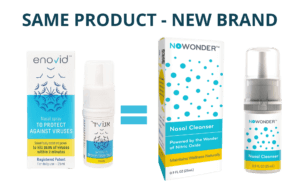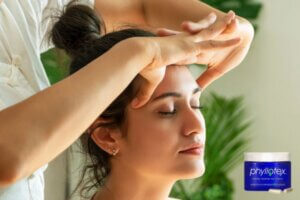
I recently saw some exciting research suggesting that cold plunges can benefit hair growth. I’m keen to reverse the effects of aging on my hair, so I am willing to fly (almost literally) to the ends of the earth if it can somehow slow my hairline recession down and hopefully restore my previously healthy head of hair,
There has recently been an interesting debate among scientists on the general effects of Cold Plunge Therapy (CPT) or Cold Water Immersion (CWI). A trio of Norwegian scientists conducted a survey of multiple relevant research papers on what is variously called cold-water immersion, winter swimming, or ice bathing. Some of the most interesting findings of these studies concerned the effects of cold water immersion on the scalp generally and on hair growth specifically.
Meet Invercargill, South Island, New Zealand.
Like most Northern Hemisphere residents, I had no idea what to expect when landing in the middle of winter in a town that lies on the same latitude south of the Equator as Seattle-Tacoma (WA) and Great Falls (MO) lie north. While the air temperature is mild, the waters in the streams and lakes that make visiting Invercargill such a pleasure are nearly freezing since they flow down from the snow-covered Southern Alps that lie along the western edge of South Island.
It has made the “sport” of cold plunging popular, and all around the town, resorts and hotels offer the opportunity to bake yourself into a sweat in a sauna or hot pool and then jump straight into a plunge bath fed by natural waters at near-zero temperatures. After watching people of all ages taking the plunge (pun intended), I overcame my fears. I tried it more than once, mainly because cold plunge therapy may have potential benefits for hair health, particularly in stimulating hair growth and improving the overall appearance of hair. The main benefits come from the way it can stimulate hair follicles, which may promote hair growth and increase the thickness and length of hair, and can improve hair texture by sealing the hair cuticle, leading to shinier and less frizzy hair. This is because cold water preserves the natural oils in the hair, preventing moisture loss and damage. Furthermore, regular exposure to cold water can strengthen hair, making it less prone to breakage and dryness, which are common issues that can contribute to hair loss.
But there are a few boundaries to the potential that CWI represents for people battling to slow down or reverse hair loss, which is a widespread problem for men as they mature. Keep in mind the caveats that come with using cold water immersion therapy. A study conducted by Dr. Yossi Rathner, a senior lecturer in Physiology in the Department of Anatomy and Physiology at the University of Melbourne, arrives at several conclusions, such as that “sudden immersion in cold water will activate the sympathetic nervous system, causing a rapid increase in heart rate” which can trigger a loss of breathing control and results in drowning, cardiac arrhythmia, and hypothermia as significant hazards.
So, while it’s worthwhile being aware of the possibility that CWI could provide hair regrowth opportunities for a small proportion of the population, the real benefits of these studies are in understanding how cold water immersion slows down hair loss and promotes regrowth and then finding alternatives.
How does cold water immersion promote hair regrowth?
The first feature of cold water immersion’s effect on hair growth is its effect on hair follicles. CWI stimulates blood circulation to the scalp and can enhance the health of hair follicles, potentially promoting hair growth and improving hair texture. It can help strengthen hair, making it less prone to breakage and allowing it to grow longer. It can also reduce inflammation in the scalp, improving overall scalp health, which is essential for hair growth. The problem is that there’s no scientific evidence yet of how often and for how long cold plunges must be repeated. It likely needs to be spread out over months or even years. In those terms, CWI is a potential solution for only a few people.
However, I learned something worthwhile from all I have discovered about CWI’s effects: the central importance of hair follicles to hair loss and regrowth.
Keeping the follicles in peak condition is essential for hair health!
A balanced diet rich in essential nutrients, minerals, and vitamins is necessary to provide an optimal environment for follicles to prevent hair loss and promote natural hair growth. Other factors, such as genetics, hormonal changes, and underlying health conditions, can also impact hair health. When there has already been significant hair loss, consulting a healthcare professional for personalized advice is advisable.
Nutrients play a crucial role in maintaining healthy hair follicles. There are some key ways nutrients influence hair follicle health:
Protein: Hair is primarily made of protein, so getting enough protein in the diet is essential for hair follicle development and growth. Protein provides the building blocks for keratin, the main structural component of hair. Without sufficient protein, hair follicles may produce thinner and weaker hair strands.
Vitamins: Vitamins support different aspects of hair follicle health:
- Vitamin A promotes sebum production to keep the scalp and hair moisturized. It also supports the growth and differentiation of hair follicle cells.
- B vitamins, especially biotin (B7), are involved in converting nutrients into energy for hair follicles. Biotin deficiency has been linked to hair loss.
- Vitamin C aids collagen production, which is important for blood vessel formation to nourish hair follicles. It also has antioxidant properties to protect follicles from damage.
- Vitamin D plays a crucial role in hair production and follicle health. A deficiency in Vitamin D can lead to hair loss, as it’s essential for follicle cycling and growth.
Minerals: Some minerals are also essential for hair follicle function:
- Iron carries oxygen to hair follicles, which is necessary for growth. Iron deficiency is a common cause of hair loss.
- Zinc is involved in protein synthesis, cell division, and DNA replication within hair follicles. Deficiency can lead to telogen effluvium, a type of hair loss.
- Selenium is an antioxidant that protects follicles from oxidative stress and supports thyroid function, vital for hair growth.
Fatty Acids: Omega-3 and omega-6 fatty acids nourish hair follicles and help maintain a healthy scalp environment. They have anti-inflammatory properties that can prevent damage to follicles.
Adequate intake of these essential nutrients through a balanced diet or targeted supplementation can help maintain hair follicles’ health and proper functioning, supporting strong, healthy hair growth.
Introducing Phyllotex – a dietary supplement that addresses hair follicle health’s fundamental needs.
Phyllotex is a supplement designed to help slow down hair loss and encourage natural hair growth by reducing excess shedding and promoting the growth of thicker and stronger strands. It is available for men and women without any side effects or prescription.
Phyllotex brings together a purposeful mix of natural herbs like Pau D’arco (tabebuia Avellaneda) with green coffee beans, olive leaves, and acai. Pau D’Arco has been used in traditional Central American cultures for centuries, and laboratory investigations have identified the anti-inflammatory and antimicrobial effects that make it so effective in promoting scalp health. These herbal ingredients are combined with essential vitamins and minerals, including vitamin D and zinc, to promote hair health by protecting and nourishing hair follicles naturally to combat hair loss and encourage regrowth in areas of receding hairlines.
Scientifically validated studies using the accepted Hair Mass Index (HMI) method for measurement to assess scalp coverage found that:
- Most subjects stopped shedding hair after two months.
- At four months, hair count in non-thinning areas had increased by 90%, and it continued to improve to 140% after six months and 160% after nine months. Very similar effects were measured in areas where there had been hair shedding previously, with the same improvement of 160% after nine months.
- Subjects showed a significant increase in their hair’s thickness with an improvement of 150% over the trial’s span.
- Subjects reported that their hair felt more manageable and fuller after using the product for three months.
FAQ
How does Phyllotex work compared to Finasteride?
One of the main differences is in the treatment range. Phyllotex is a supplement that promotes natural hair growth for both men and women, whereas Finasteride is a remedy that only deals with male pattern baldness (androgenetic alopecia). It works by targeting the underlying hormonal factors responsible for hair loss. It blocks the enzyme that changes testosterone (the primary male hormone) into dihydrotestosterone (DHT). High levels of DHT can cause hair follicles to shrink, resulting in hair loss, especially for men with a genetic tendency towards baldness.
Finasteride can have unwanted side effects, such as erectile dysfunction and a possible decrease in libido levels. Phyllotex is a natural supplement with fewer and less severe side effects than Finasteride.
How reliable is Phyllotex?
Phyllotex® is a patented product that has been evaluated by experts in the U.S. Patent Office and found to satisfy the requirements for both its composition and its method for promoting natural hair growth (U.S. Patent 11,160,750.) Experts have accepted the company’s scientific evidence on Phyllotex’s effects on hair follicle cells.
Phyllotex works by promoting four processes that boost follicle health:
- Phyllotex boosts blood flow to the scalp, which promotes better microvascularization of the hair follicles.
- The natural ingredients of each dose provide essential nutrients required for promoting growth.
- Phyllotex encourages the secretion of natural oils that can help shield the hair from external stressors like pollutants and UV rays.
- Phyllotex is specifically designed to protect hair follicles from damage caused by dihydrotestosterone (the hair assassin), the main cause of androgenetic alopecia.
Phyllotex is a simple and gentle natural treatment that promotes natural hair growth. It’s important to take a long-term view and combine Phyllotex with some other basic dietary and hair-treatment guidelines, such as eating a balanced diet with good levels of protein, iron, vitamins B and D, biotin, and healthy fats. Avoid subjecting your scalp to environmental stress, such as bright sunlight, gases, or strong chemicals like highly chlorinated swimming pool water. Scalp massages can help to improve circulation, but keep them gentle.







